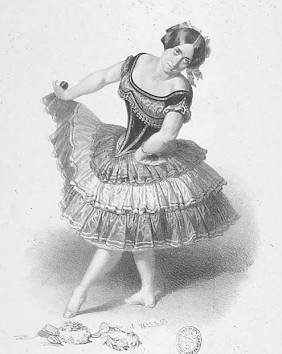The Origins and Evolution of Flamenco
Flamenco is more than just an art form; it is a powerful expression of history, culture, and human resilience. Deeply intertwined with the identity of the Gitano (Roma) community in Spain, flamenco is a testament to cultural fusion and artistic evolution. To truly appreciate its depth, it is essential to understand its origins, influences, and the journey that has shaped it into the art form we know today.
(With my original interpretations and restructured content, this article is based on insights from "Guía del Flamenco" by Luis López Ruiz.)
1. The Roots of the Gitano People
The Gitanos, commonly associated with flamenco, have a long and complex history. Contrary to the widespread myth that they originated from Egypt, historical research confirms that their roots trace back to Northern India, specifically the region of present-day Pakistan. Over centuries, they migrated westward through Persia, Armenia, and Turkey, eventually settling in various parts of Europe, including Spain. This journey not only influenced their cultural identity but also played a key role in the formation of flamenco.
2. The Gitano Migration and Settlement in Spain
The Gitanos arrived in Spain in the early 15th century, initially recorded as entering the Iberian Peninsula around 1425. They moved through the Pyrenees and gradually spread across Spain, particularly in Andalucía. Over time, they assimilated into Andalusian society while also preserving distinct aspects of their culture. Andalucía, known for its diverse cultural influences due to historical interactions with Phoenicians, Moors, Jews, and other civilizations, became the perfect setting for the emergence of flamenco.
3. Cultural Exchange and the Birth of Flamenco
Flamenco did not appear overnight. It was born from a fusion of musical and dance traditions from different cultures, particularly Andalusian folklore, Moorish melodies, and Gitano rhythms. The Gitanos contributed their profound expressiveness, intricate rhythms, and unique vocal techniques. Over time, flamenco evolved into a distinct art form, characterized by its raw emotion, powerful singing (cante), intricate guitar playing (toque), and intense dance movements (baile).
4. The Early Development of Flamenco
Although flamenco as we know it began taking shape in the late 18th century, its origins can be traced back even earlier. The first literary mentions of flamenco appeared in the late 18th and early 19th centuries, with references to certain songs and dances performed by Gitanos. By this time, flamenco had already developed as an oral tradition, passed down through generations without formal documentation.
5. The Golden Age of Flamenco (1840–1860)
The mid-19th century is often regarded as the "Golden Age of Flamenco." During this period, flamenco gained widespread recognition, and legendary cantaors (singers) like El Planeta and El Fillo brought structure to the genre. This era saw the refinement of key flamenco forms (palos) such as seguiriyas, soleá, and bulerías, which remain central to flamenco today.
Josefa Vargas , 1840
6. The Rise of the Café Cantante (1860–1920)
In the late 19th century, flamenco moved from informal gatherings to professional venues known as cafés cantantes. These establishments provided a platform for flamenco performers to showcase their art to a broader audience. This period marked the professionalization of flamenco, with influential figures like Silverio Franconetti, Enrique el Mellizo, and Manuel Torre helping shape its stylistic elements.
Un café cantante (1850). Oil painting by José Alarcón Suárez.
7. Flamenco in the 20th Century: Theatrical Expansion and Commercialization
The 20th century saw flamenco’s evolution from intimate café performances to grand theatrical productions. While this brought flamenco to a wider audience, it also led to commercialization, sometimes at the expense of authenticity. The Ópera Flamenca era of the 1940s, for instance, focused on more commercialized and melodic styles, often softening the raw emotional intensity of traditional flamenco. However, the mid-century revival in the 1950s helped restore interest in more traditional flamenco. Scholars and musicians, recognizing its artistic and cultural significance, worked to preserve and promote the purest forms of the art. This led to the establishment of formal institutions and recordings that documented flamenco for future generations.
8. The Influence of Festivals, Theater, and Political Expression
Flamenco found new platforms in festivals and theatrical productions. The late 20th century saw the emergence of large-scale flamenco festivals across Andalucía, ensuring that traditional styles remained alive. Meanwhile, flamenco also became a vehicle for political expression. In the years surrounding Franco’s dictatorship, artists like Manuel Gerena and José Menese used flamenco as a means to address social and political issues. Though flamenco had historically focused on personal struggles, the political climate of the time encouraged a more collective and activist approach.
Carmen Amaya
9. Challenges Facing Flamenco Today
While flamenco has successfully adapted to modern times, it faces several challenges:
Over-commercialization – The pressure to cater to tourists has led to a loss of depth and authenticity in some performances.
Excessive Innovation – While evolution is natural, some argue that excessive fusion with other musical styles has diluted traditional flamenco.
Loss of Traditional Singing – The a palo seco style, which emphasizes pure, unaccompanied singing, has become less common.
Trivialization of Emotion – Earlier generations of artists emphasized deep, personal suffering in their performances, while some modern interpretations are seen as overly polished and lacking raw intensity.
10. The Future of Flamenco
Despite these challenges, flamenco continues to thrive. Festivals, digital recordings, and international recognition have helped preserve its legacy while allowing for creative evolution. Whether performed in an intimate tablao or a grand theater, flamenco remains a deeply expressive art form that captivates audiences worldwide. The key to its future lies in maintaining a balance between honoring tradition and embracing innovation.
11. Conclusion
Flamenco is more than a performance; it is a profound expression of history, struggle, and resilience. From its roots in the migration of the Gitanos to its evolution into an internationally recognized art form, flamenco has continually adapted while maintaining its essence. By understanding its past, we can ensure that its future remains just as vibrant and meaningful.







